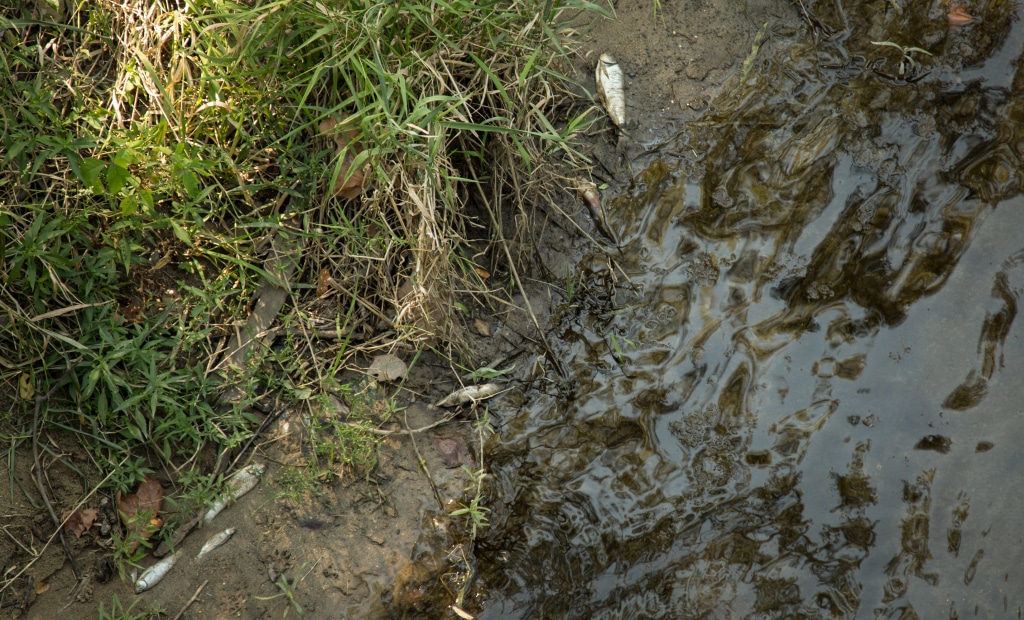Last week, concentrated livestock waste from a nearby cattle operation spilled into Stony Creek and the Vermilion River. Inspectors observed pollution impacts several miles downstream from the site of the spill, including in the Salt Fork of the Vermilion River. The Oakwood public water supply, located seven miles from the livestock facility, was identified as being at risk. Due to the spill, Oakwood is not currently drawing water from the River.
According to the Illinois Department of Natural Resources, the spill also resulted in a fish kill over a 10-mile stretch of Stony Creek and the Salt Fork of the Vermilion River. An IDNR biologist estimates that more than 98,000 fish were killed. This area is habitat for several state-listed edangered species, and, sure enough, three state-listed species (River Redhorse, Bigeye Chub, and Bluebreast Darter) were found dead as a result of the spill.
Video of dead fish recorded Sept. 16, 2015, five days after manure spill. Fish found near Muncie, Illinois, approx. 1 mile downstream from the livestock facility
This section of the river is also home to one of the relocation sites for the federally endangered Northern Riffleshell and Clubshell mussels. Impact on the mussel population has not yet been determined as the pollution has obscured visibility in the river.
The Illinois Environmental Protection Agency (IEPA) has referred an enforcement action to the Illinois Attorney General’s office against the operator.
This is exactly why livestock facilities and factory farms should be located far enough away from streams and rivers so that accidents or spills do not pollute water bodies, causing fish kills and endangering public water supplies.
We also question why this report was made public nearly a week after the incident. That stretch of the Salt Fork is a favorite for recreation, and during a beautiful late summer weekend, how many anglers and paddlers found themselves up the proverbial . . . “manure creek?”









